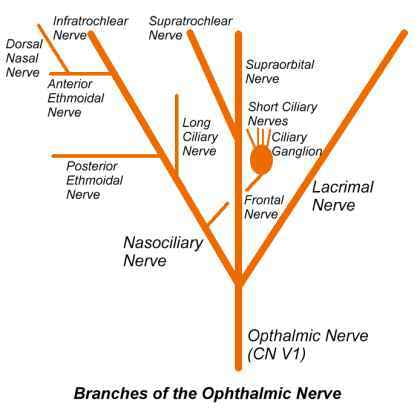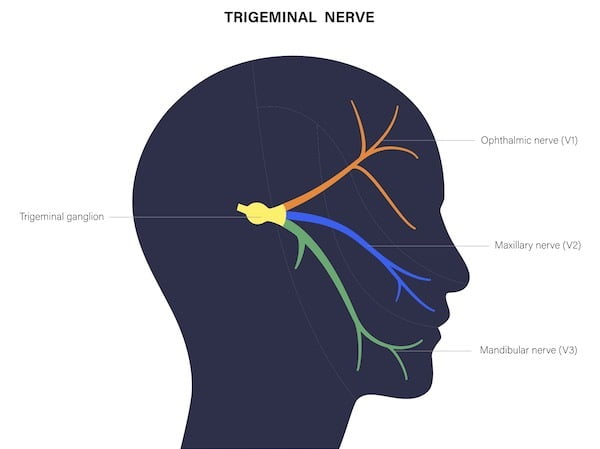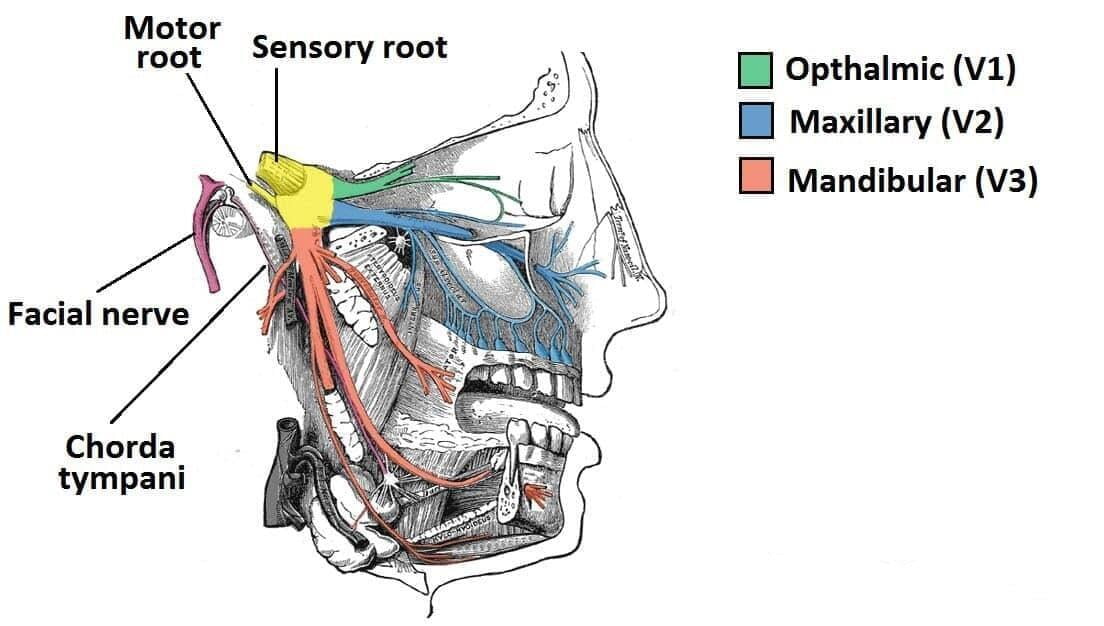In the intricate realm of human anatomy, the trigeminal nerve stands as a pivotal player, wielding its influence over the intricate network of sensations within the face and controlling the pivotal muscles responsible for chewing. At Malligai Dental Hospital, understanding the complexities of this nerve is vital, considering its crucial role in dental health and facial functionality.
The trigeminal nerve, also known as the fifth cranial nerve, emerges from the brainstem and branches out into three primary divisions: the ophthalmic nerve (V1), the maxillary nerve (V2), and the mandibular nerve (V3). Each of these divisions further splits into a multitude of smaller branches, intricately woven to serve specific regions and functionalities.
Ophthalmic Nerve (V1):
Ophthalmic Nerve (V1):

The ophthalmic nerve, the uppermost division of the trigeminal nerve, predominantly caters to sensory input from the upper face. It comprises branches such as the frontal nerve, lacrimal nerve, and nasociliary nerve. The frontal nerve bifurcates into supratrochlear and supraorbital nerves, responsible for sensation in the forehead, scalp, and upper eyelids. Simultaneously, the lacrimal nerve oversees tear production and sensation in the lacrimal gland and conjunctiva. The nasociliary nerve extends its reach to the eyeball, nose, and forehead.
Maxillary Nerve (V2):
Maxillary Nerve (V2):
Descending slightly lower, the maxillary nerve takes charge of the middle face's sensory aspects. It divides into branches like the zygomatic, pterygopalatine, and superior alveolar nerves. The zygomatic nerve supplies sensation to the cheekbone and skin over the temple, while the pterygopalatine nerve contributes to the nasal cavity, palate, and pharynx. The superior alveolar nerves delve into the upper teeth, gums, and surrounding tissues.
Mandibular Nerve (V3):
Mandibular Nerve (V3):
The mandibular nerve, the largest division, exerts its influence over the lower face and motor functions related to chewing. It further subdivides into significant branches like the auriculotemporal nerve, lingual nerve, inferior alveolar nerve, and the mental nerve. The auriculotemporal nerve extends its sensory domain to the scalp, temple, and external ear. The lingual nerve governs taste perception on the anterior two-thirds of the tongue and supplies sensation to the floor of the mouth. The inferior alveolar nerve navigates through the lower teeth, gums, and lower lip. Lastly, the mental nerve contributes to sensation in the chin, lower lip, and surrounding areas.
Understanding the complexity and interconnectedness of these branches within the trigeminal nerve is pivotal in the field of dentistry. Dental procedures, ranging from root canals to tooth extractions, often require precise management and consideration of these nerve branches to ensure patient comfort and safety.
At Malligai Dental Hospital, our commitment to comprehensive care encompasses a deep understanding of the trigeminal nerve and its branches. Our skilled professionals diligently assess and mitigate any potential risks associated with dental procedures, ensuring optimal patient care and comfort.
Conclusion
In conclusion, the branches of the trigeminal nerve intricately map the sensory and motor territories of the face, playing a pivotal role in everyday functionalities such as chewing, speaking, and sensation. Their understanding forms the cornerstone of precision in dental procedures, fostering a commitment to excellence in patient care.
Understanding the intricacies of the trigeminal nerve branches illuminates the path toward better dental care, and at Malligai Dental Hospital, this knowledge translates into superior patient experiences and care.




